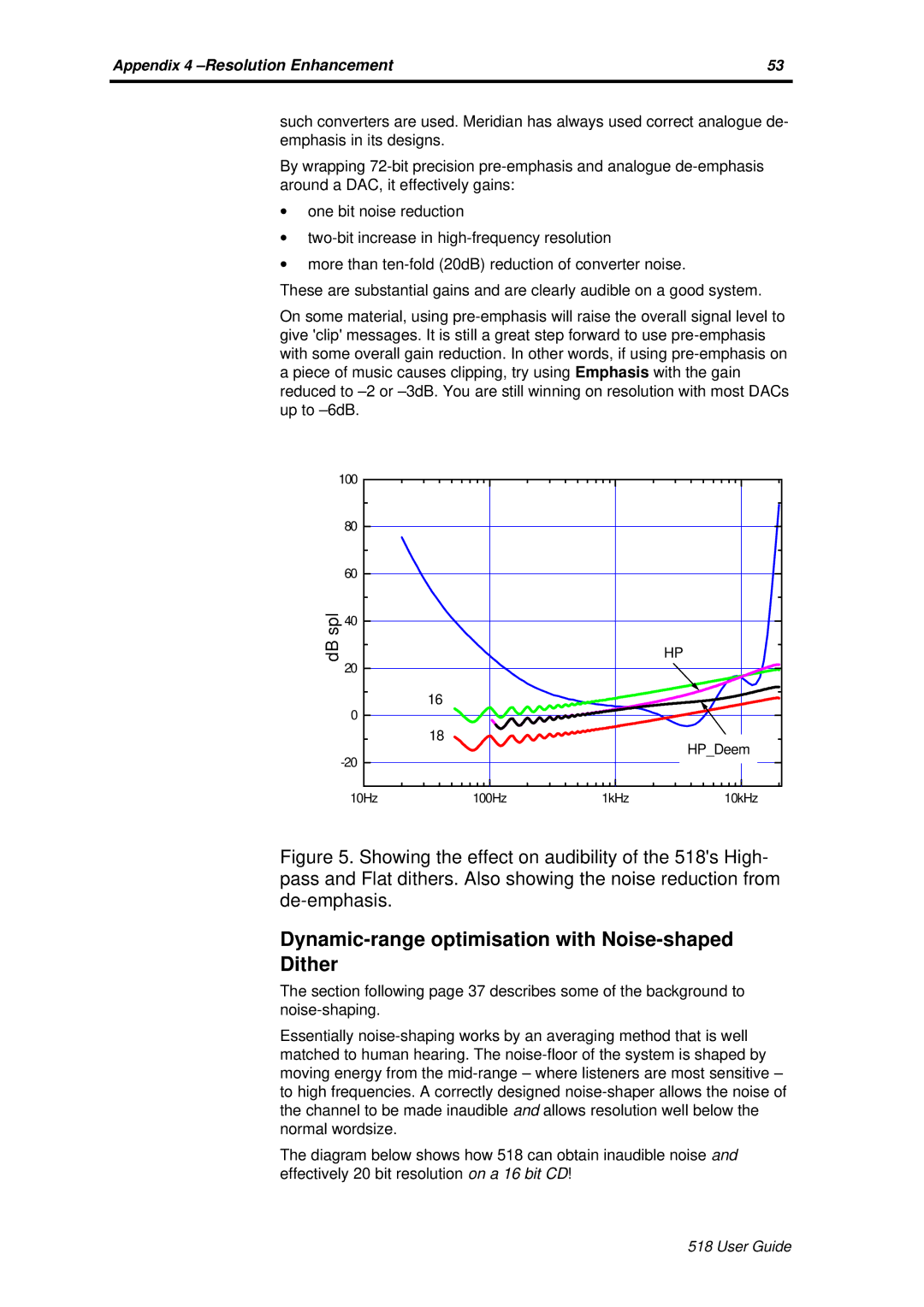Appendix 4 –Resolution Enhancement | 53 |
| |
such converters are used. Meridian has always used correct analogue de- emphasis in its designs.
By wrapping 72-bit precision pre-emphasis and analogue de-emphasis around a DAC, it effectively gains:
∙one bit noise reduction
∙two-bit increase in high-frequency resolution
∙more than ten-fold (20dB) reduction of converter noise.
These are substantial gains and are clearly audible on a good system.
On some material, using pre-emphasis will raise the overall signal level to give 'clip' messages. It is still a great step forward to use pre-emphasis with some overall gain reduction. In other words, if using pre-emphasis on a piece of music causes clipping, try using Emphasis with the gain reduced to –2 or –3dB. You are still winning on resolution with most DACs up to –6dB.
| 100 | | | |
| 80 | | | |
| 60 | | | |
dB spl | 40 | | | |
20 | | | HP |
| | | |
| | 16 | | |
| 0 | | | |
| | 18 | | HP_Deem |
| -20 | | |
| | | |
| 10Hz | 100Hz | 1kHz | 10kHz |
Figure 5. Showing the effect on audibility of the 518's High- pass and Flat dithers. Also showing the noise reduction from de-emphasis.
Dynamic-range optimisation with Noise-shaped Dither
The section following page 37 describes some of the background to noise-shaping.
Essentially noise-shaping works by an averaging method that is well matched to human hearing. The noise-floor of the system is shaped by moving energy from the mid-range – where listeners are most sensitive – to high frequencies. A correctly designed noise-shaper allows the noise of the channel to be made inaudible and allows resolution well below the normal wordsize.
The diagram below shows how 518 can obtain inaudible noise and effectively 20 bit resolution on a 16 bit CD!

